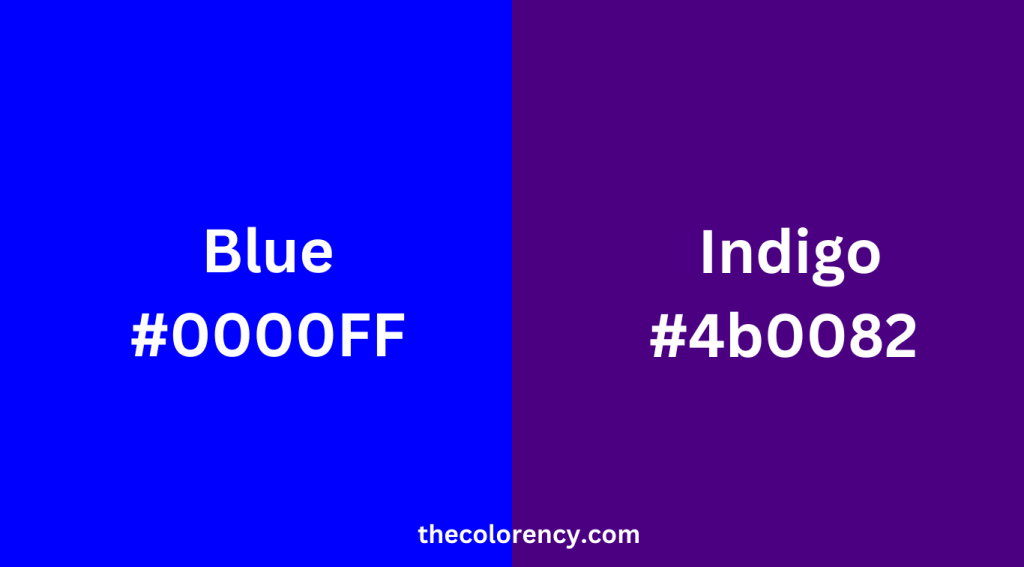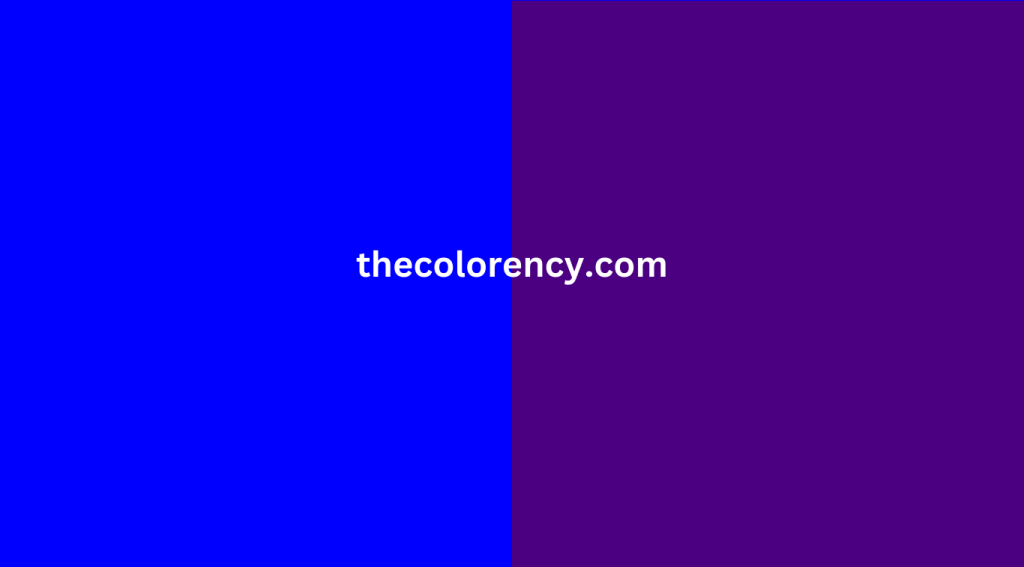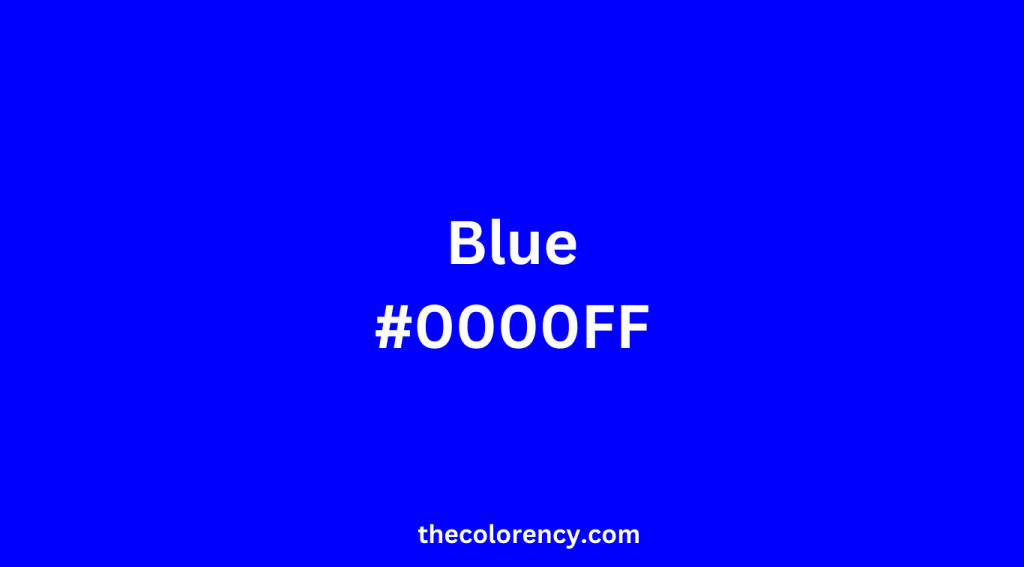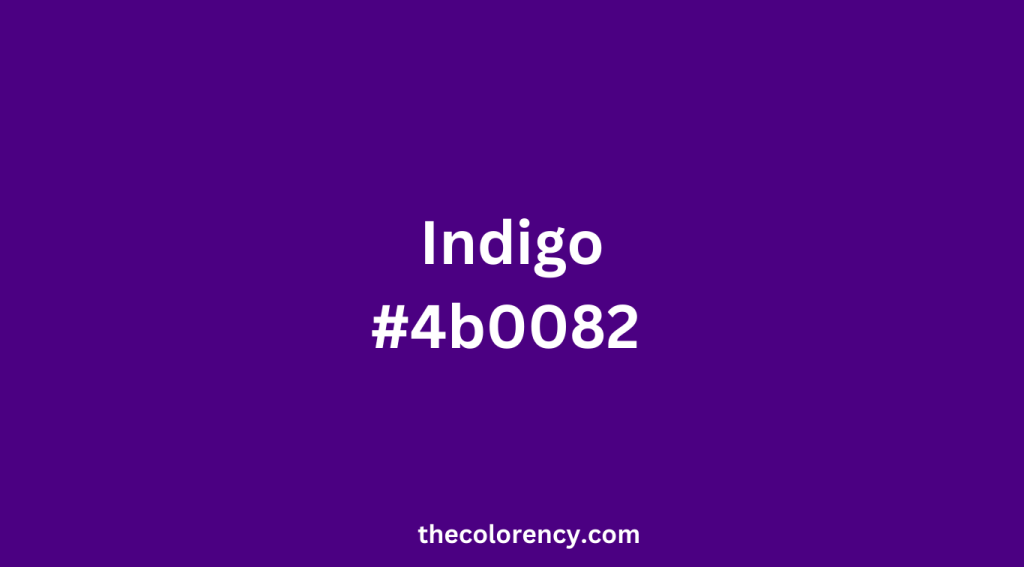
Blue and indigo are two colors that are often confused with each other, but they have distinct differences. In this article, we will discuss more details about “Blue Vs Indigo” .
Blue Vs Indigo:What’s the Different?
Introduce Blue in One Sentence
Blue is a primary color, cool and calming color. It evokes feelings of calmness and tranquility, and people often associate it with the sky and sea.
Introduce Indigo in One Sentence
Indigo create in combining blue and purple. It is a secondary color. They often associate it with the night sky when the moon is full or the petals of a violet flower.
Difference in Code and Value
| Color | HEX Code | RGB Value | CMYK Value |
|---|---|---|---|
| Blue | #0000FF | RGB(0, 0, 255) | CMYK(100, 100, 0, 0) |
| Indigo | #4B0082 | RGB(75, 0, 130) | CMYK(42, 100, 0, 49) |
Code and Value of Blue
The RGB value for blue is (0, 0, 255), which means that it contains no red or green light, and a high amount of blue light. The HEX code for blue is #0000FF, which represents the same color in hexadecimal format.
Code and Value of Indigo
The RGB value for indigo is typically (75, 0, 130). This means that indigo contains a higher proportion of blue light (130) than red (75) or green (0).
The HEX code for indigo is #4B0082, which represents the same color in hexadecimal format. The composition of this code is made up of varying levels of red, green, and blue light, with a higher proportion of blue.
In terms of CMYK values, indigo is often composed of 42% cyan, 100% magenta, 0% yellow, and 49% black. This reflects the higher proportion of black needed to create the dark, rich hue of indigo, compared to other shades of blue.
How to Distinguish Blue and Indigo

Blue and indigo are both colors within the blue-violet spectrum, and they can be difficult to distinguish from one another.
There are a few key differences that can help you tell them apart.
Hue
Blue is a primary color, while indigo is a secondary color created by mixing blue and purple. As a result, indigo is a deeper shade of blue with a purplish tint.
Wavelength
Blue has a shorter wavelength than indigo, making it appear brighter and closer to green on the color spectrum. Indigo has a longer wavelength, making it appear darker and closer to purple on the spectrum.
Cultural context
In some cultures, indigo is considered a distinct color separate from blue, while in others it is considered a shade of blue. It’s important to consider the cultural context in which you are trying to distinguish between the two colors.
Overall, the differences between blue and indigo can be subtle, but paying attention to hue, wavelength, and cultural context can help you distinguish between the two.
These differences in color values reflect the variations in hue and saturation between blue and indigo.
Blue Vs Indigo: Where Does the Name Come From?
The names “blue” and “indigo” have different origins and cultural contexts.
Name of Blue
The word “blue” comes from the Old English word “blǣwen,” which referred to the color of the sky or the sea. Blue is a primary color, which means it cannot be created by mixing other colors. It has been an important color in art, fashion, and culture throughout history, and it is often associated with calmness, trust, and serenity.
Name of Indigo
Indigo is a secondary color that is created by mixing blue and purple. The word “indigo” comes from the Greek word “indikon,” which means “Indian dye.” Indigo was originally obtained from the Indigofera plant and was used as a dye in many cultures, including ancient India, Egypt, and China. It was a valuable and expensive commodity in the past, and was often associated with luxury and royalty.
Both blue and indigo are shades of blue-violet, they have different origins and cultural contexts that have shaped their names and meanings.
Blue Vs Indigo: Matching With other Color


Blue and indigo are two closely related colors that are often used interchangeably. While they share some similarities, they have distinct characteristics that make them unique. When it comes to matching blue and indigo with other colors, there are a variety of ways to achieve a harmonious and visually appealing color palette.
Matching Blue with Other Colors
Blue is a versatile color that can be paired with a range of other colors to create a variety of moods and atmospheres. One of the most classic combinations is blue and white, which creates a clean, fresh, and timeless look. This combination is often used in coastal and nautical-themed designs.
Another way to match blue with other colors is to pair it with complementary colors on the color wheel, such as orange or yellow. This creates a bold and eye-catching look that is perfect for making a statement.
For a more subdued and calming look, blue can be paired with other cool colors such as green, purple, or gray. These colors create a tranquil and relaxing atmosphere that is perfect for bedrooms, bathrooms, or other spaces where relaxation is the goal.
Matching Indigo with Other Colors
Indigo is a darker, richer shade of blue that is often associated with luxury and sophistication. When it comes to matching indigo with other colors, it’s important to choose colors that complement its deep and moody tones.
One classic combination is indigo and white, which creates a crisp and modern look that is perfect for contemporary interiors. This combination works particularly well in living rooms, dining rooms, and other areas where you want to create a chic and sophisticated atmosphere.
Another way to match indigo with other colors is to pair it with other jewel tones, such as emerald green, ruby red, or sapphire blue. This creates a luxurious and opulent look that is perfect for creating a sense of drama and glamour in any space.
For a more understated and calming look, indigo can be paired with other cool tones such as gray, lavender, or dusty rose. This creates a serene and tranquil atmosphere that is perfect for bedrooms, bathrooms, or other spaces where relaxation is key.
Matching Blue and Indigo Together
When it comes to matching blue and indigo together, there are a variety of ways to achieve a harmonious and visually appealing color palette. One way is to use them in a gradient, starting with blue and gradually adding more indigo shades. This creates a seamless transition between the two colors, allowing them to complement each other perfectly.
Another way to match blue and indigo together is to use them in a pattern. This can be achieved through prints or textures that incorporate both colors. For example, a fabric with a blue and indigo paisley pattern can be used as an accent in a room with blue walls. This creates a cohesive look that is visually appealing and balanced.
Blue and indigo are two beautiful colors that can be used in a variety of ways to create a harmonious and visually appealing color palette. Whether you choose to pair them with complementary colors or use them together in a gradient or pattern, the possibilities are endless. Experiment with different combinations to find the perfect look for your space.
Conclusion
In conclusion, while blue and indigo may seem similar at first glance, they have distinct differences in their definitions, origins. Blue is a versatile color that is commonly found in nature. While indigo is a darker, more mysterious shade of blue that has a complex history. Both colors have their own unique uses and associations, making them valuable assets in the world of fashion and design.
